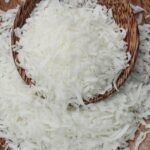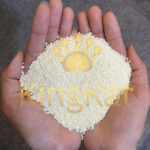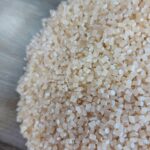CASHEW NUT SHELL OIL
In recent years, there has been a growing interest in plant-based diets as people seek healthier and more sustainable ways to eat. Whether you’re motivated by health concerns, environmental issues, or animal welfare, making the transition to a plant-based diet can be a rewarding journey. However, it can also be challenging if you’re unsure where to start or how to make your meals both nutritious and delicious. One versatile ingredient that can play a significant role in this transition is desiccated coconut.
Desiccated coconut is made from the flesh of mature coconuts that have been grated and dried. It’s a staple in many kitchens due to its long shelf life, rich flavor, and adaptability in various recipes. Moreover, it’s a great source of healthy fats, fiber, and essential nutrients, making it an excellent addition to a plant-based diet. In this blog, we’ll explore six steps to help you transition to a plant-based diet using desiccated coconut.
Table of Contents
Toggle1. Start by Incorporating Plant-Based Ingredients in Breakfast
Breakfast is often considered the most important meal of the day, and it’s a perfect opportunity to start incorporating plant-based ingredients. Desiccated coconut can add a delicious and nutritious boost to your morning meals.
Try adding desiccated coconut to your oatmeal, smoothie bowls, or vegan pancakes. For a quick and easy option, mix it with chia seeds, almond milk, and your favorite fruits for a creamy, coconut-flavored chia pudding. The natural sweetness and rich texture of desiccated coconut can enhance the flavor of your breakfast while providing a source of healthy fats to keep you full and energized throughout the morning.
2. Use Desiccated Coconut in Plant-Based Baking
Baking is another area where desiccated coconut can shine. Many traditional baked goods rely on eggs, butter, and milk, but these can be easily substituted with plant-based alternatives. Desiccated coconut can be used to add moisture, texture, and flavor to your vegan baking recipes.
For instance, you can replace dairy with coconut milk and add desiccated coconut to cakes, cookies, and muffins. Coconut macaroons are a classic example of a treat that highlights the flavor of desiccated coconut. Additionally, you can use desiccated coconut as a topping for baked goods like banana bread or as an ingredient in no-bake energy bars.
3. Incorporate Desiccated Coconut in Savory Dishes
While desiccated coconut is often associated with sweet dishes, it’s also a fantastic ingredient for savory meals. In many Asian, African, and Caribbean cuisines, desiccated coconut is used to add richness and depth to curries, soups, and rice dishes.
To incorporate desiccated coconut into your savory meals, consider making a coconut-based curry. Simply sauté your favorite vegetables and plant-based protein sources like tofu or lentils, then simmer them in a coconut milk sauce thickened with desiccated coconut. You can also use desiccated coconut in pilafs or stir-fries, where it adds a delightful crunch and a hint of sweetness.
4. Use Desiccated Coconut in Snacks and Energy Bites
Transitioning to a plant-based diet doesn’t mean giving up snacks. In fact, desiccated coconut can be a key ingredient in creating healthy, plant-based snacks that are both satisfying and nutritious.
You can use desiccated coconut to make energy bites or bars. Combine it with nuts, seeds, dates, and a bit of maple syrup or agave for sweetness. Roll the mixture into bite-sized balls or press it into a pan to create bars. These snacks are perfect for a midday energy boost or a pre-workout treat, and they’re easy to take on the go.
5. Enhance Your Meals with Coconut-Based Condiments
Plant-based diets are all about flavor, and condiments can make or break a meal. Desiccated coconut can be used to create a variety of delicious and nutritious condiments that will enhance your meals.
One popular option is to make coconut chutney, a staple in South Indian cuisine. This condiment combines desiccated coconut with spices, herbs, and a bit of lime juice, creating a tangy and flavorful addition to your meals. You can also create coconut-based sauces or dips by blending desiccated coconut with herbs, garlic, and plant-based yogurt or coconut milk.
6. Incorporate Desiccated Coconut into Plant-Based Meal Prep
Meal prep is essential for anyone transitioning to a plant-based diet. It helps you stay on track with your dietary goals and ensures you have nutritious meals ready to go. Desiccated coconut can be a valuable ingredient in your meal prep routine.
Consider preparing a large batch of coconut-based curry or a coconut-infused grain salad at the beginning of the week. These dishes can be portioned out into containers and stored in the fridge for quick lunches or dinners. You can also prepare a batch of coconut granola or coconut energy bites to have on hand for snacks throughout the week.

Conclusion
Transitioning to a plant-based diet can be an enjoyable and fulfilling experience, especially when you have versatile ingredients like desiccated coconut at your disposal. From breakfast to snacks to savory dishes, desiccated coconut adds flavor, texture, and nutrition to your meals, making the transition smoother and more enjoyable. By following these six steps, you’ll find it easier to embrace a plant-based lifestyle while enjoying the delicious benefits that desiccated coconut has to offer.
Whether you’re just starting your plant-based journey or looking to diversify your current diet, desiccated coconut is a pantry staple that can help you create satisfying and nutritious meals every day.












